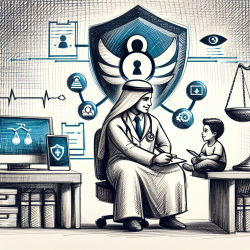Introduction
In an increasingly interconnected world, the impacts of violent conflict extend beyond borders, affecting global health and stability. The research article titled Mitigating the Global Health Threat of Violent Conflict: A Preventive Framework offers a comprehensive analysis of how the global health community can play a pivotal role in preventing violent conflicts. This blog aims to distill key insights from the research and provide actionable strategies for practitioners, especially those in the field of speech-language pathology, to contribute to conflict prevention and improve outcomes for children.
The Role of Global Health in Conflict Prevention
The research underscores the profound impact of violent conflict on physical, mental, and social well-being. With approximately 22% of individuals in conflict-affected regions suffering from mental health issues such as depression and PTSD, the need for preventive action is critical. The global health community is uniquely positioned to address both the structural and situational roots of conflict through multidisciplinary collaboration.
Actionable Strategies for Practitioners
Practitioners can enhance their skills and contribute to conflict prevention by implementing the following strategies:
- Early Warning Systems: Collaborate with public health specialists to develop early warning systems that track indicators of emerging conflict. This can involve adapting epidemiological models to identify potential conflict zones.
- Educational Initiatives: Engage in educational programs that promote conflict resolution skills. Speech-language pathologists can play a crucial role in developing communication strategies that facilitate understanding and empathy among conflicting parties.
- Policy Advocacy: Advocate for policies that address the structural causes of conflict, such as inequality in access to resources and social services. Practitioners can join coalitions that lobby for reforms promoting peace and stability.
Expanding the Role of Global Health
To effectively prevent violent conflict, the global health community must expand its focus beyond the aftermath of conflict to include preventive measures. This involves integrating conflict prevention into existing health models and training practitioners in negotiation and mediation techniques. By doing so, practitioners can help reduce the incidence of conflict and its devastating effects on communities, particularly children.
Conclusion
Investing in conflict prevention is an investment in global health. By addressing the root causes of conflict and promoting peace, practitioners can contribute to healthier, more stable communities. For those interested in exploring this topic further, the original research paper provides a wealth of information and can be accessed here.










